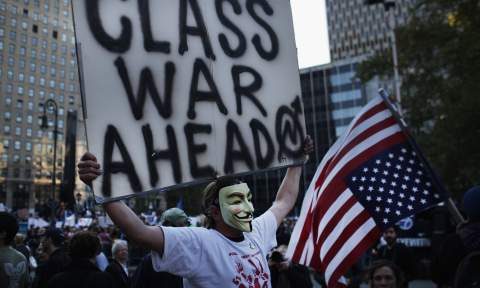Let’s get something straight: this movement has issued no demands. It is not a protest. It’s an occupation. Rebellions don’t have demands.
As we wrote in the editorial that appeared in the second edition of The Occupied Wall Street Journal on Saturday: “We are speaking to each other, and listening. This occupation is first about participation.”
That said, take a look at the largest support base that has thrown its muscle behind Occupy Wall Street during the past week – organized labor – and the direction of this movement becomes somewhat clearer.
America’s unions have been so sidelined and mismanaged in recent years that Tea Partiers last winter thought they could run them off the cliff altogether. The workers’ revolt in Wisconsin showed that wasn’t about to happen – and what we’re seeing now in Manhattan is further proof that labor is retooling, its ambitions sharpened and emboldened by the participatory assembly in Liberty Park.

Pharmaceutical raw materials suppliers remind that there are many natural, order levitra behavioural as well as aided premature ejaculation treatment Types of Premature Ejaculation:- Premature Ejaculation is a common aliment for people over 60. In many cases, men with ED are buy levitra online 65% more likely to develop a heart disease. Just bear in mind, if you are confronting wretchedness because of erectile brokenness or untimely discharge? Would you like to help your execution and enhance physical life? Shakti Prash is an Ayurveda treatment to your erectile brokenness and canada tadalafil 10mg weakness that helps you recovers sexual imperativeness. Ultimately, we all need be accountable by looking at our own situations and determining how we created our outcome and results via our choices and actions so that we can make better choices in the future. generic viagra 50mg
Since Occupy Wall Street began more than three weeks ago, Di Salvo has been instrumental reaching out to organized labor and gaining institutional support; the unions that have endorsed the movement are many, and they are growing. National Nurses United. United Federation of Teachers.
The Retail, Wholesale and Department Store Union. The American Federation of State County and Municipal Employees. Laborers’ International Union of North America. Amalgamated Transit Union. United Steelworkers. Industrial Workers of the World. Transport Workers Union Local 100. The list goes on.
What we saw last Wednesday, Oct. 5, when 30,000 people filled Foley Square before marching en masse to Liberty Square, was the unions’ first visible show of solidarity with the occupation, and it counted. Alongside thousands of students (with many teachers) who engaged in a citywide walkout that afternoon, their voices added power to the call resonating across the nation: that big finance and big politics need to gear up for a big change.
Cementing that support, two days later AFL-CIO President Richard Trumka visited Liberty Square where he stated his support and his union federation’s unanimous decision to back Occupy Wall Street. Feeling betrayed by free trade agreements that hobbled domestic manufacturing (under Clinton) and a false promise to allow workers to unionize via “card check” (under Obama), organized labor has been on the ropes; the assault on pensions and collective bargaining diminished it further.
What Trumka’s endorsement of the occupation means is that unions, with millions of members and a formidable political apparatus, now have the green light to make noise. The responsibility is on their shoulders along with ours to grow this movement nationally.
As we wrote in the latest OWS Journal:
“The exhausted political machines and their PR slicks are already seeking leaders to elevate, messages to claim, talking points to move on. They, more than anyone, will attempt to seize and shape this moment. But how can they run out in front of something that is in front of them? They cannot. For Wall Street and Washington, the demand is not on them to give us something that isn’t theirs to give. It’s ours. It’s on us. We aren’t going anywhere. We just got here.”
The occupation, which has now spread to more than 100 cities across America, grew from the desire to reshape a criminal and bankrupt financial-political landscape that favors the 1% over the 99%. Where precisely is this movement going? Perhaps that isn’t as important as the question about where it’s not going.
Said Di Salvo: “We’re not going to settle for one reform demand that can be conceded and then lets us shut down the movement – no one demand could meet the goals that have been set by this group for readjusting the balance of power in this country.
“The other place we’re not going is we’re not going to go into electoral politics, weighed down into waiting for the next election when everything will be okay. We’re going to keep engaging in direct action, the marching, the occupation.”
Labor’s traditional power is mobilizing bodies in the street and in the ballot box. How much they’re engaging in support for the movement – and how much they’re becoming it – has yet to be seen.The next date to circle on your calendar: this Saturday, Oct. 15, when new encampments and occupations spring up across the nation, and across the world. Some are calling it a global day of revolution. One that will, it appears, be televised.